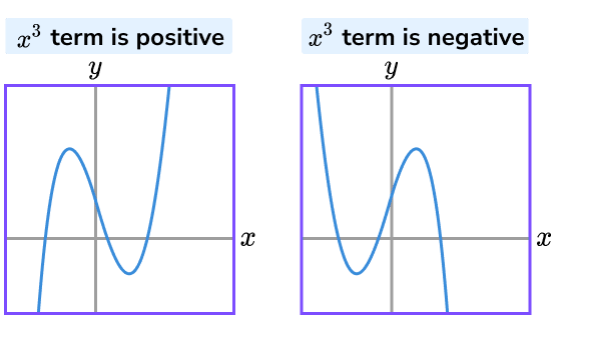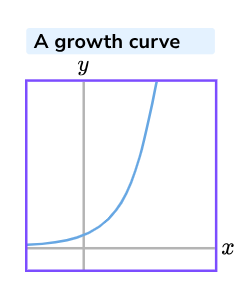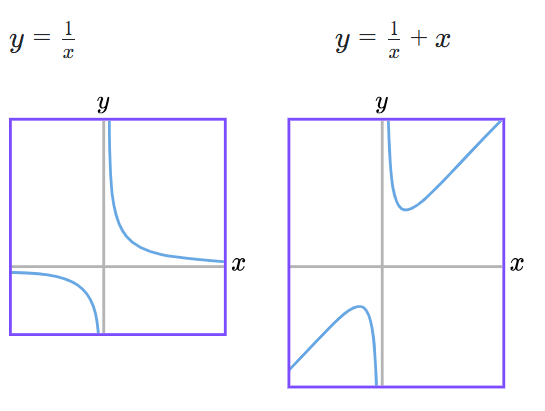quick maths
1/24
There's no tags or description
Looks like no tags are added yet.
Name | Mastery | Learn | Test | Matching | Spaced |
|---|
No study sessions yet.
25 Terms
to find a term in a normal sequence (re arrange), to find a term in a quadratic factorise and take positive term
cubic graph

exponetional (y=ab^x)

reciprocal (fraction graph)

finding mean with table
find the mp
do mp x freq
do mp x freq totoal
mp x freq total divided by tot freq
pie charts
add freq to find tot
divide by 360
get the number from above and times each one by individual freq
thats the degrees your going to draw your pie chart at
notation
A n B (a and b), intersection
A U B (A or b), union
A’ (not a) (including intersections)
cumalative freq
6 cum freq, 6
22 28
36 64
median, get tot, divide by 2
iq, find quater of tot, ¾ of tot, substract for iqr
harder box plots
median 1+n/ 2
lq n+1/4
¾ of n+1
histograms
class width
frequ density - frequency / class width , rearrange this equation in the exam PLEASE (FOR LQ UQ MEDIAN IQR ETC)
mean- draw a freq table, class widths and freq
mp x freq
tot of mp x freq/ tot freq
vt graphs
distance travelled - area under the graph: trapezium, triangles, rectangles
accelration - gradient change in y over change in x
transormation of graphs
plus outside (up) plus inside (left)
minus outside (down) minus inside (right)
-f, flip the Y vals and draw
-x, flip x vals and draw
for -f , relfect then translate
for -x inside, translate then reflect
quadratic inequalities
< < normal, if < is pointing to 0
>, always points to FIRST negative number, then opposite for second (poitive incld)
if u times or divide with a negative number (FLIP)
TO SOLVE inequalities with 3 sections, whatever done in middle, do to all of them
bearings
bearings always has 3 figures (090)
bearings are always measured clockwise
bearings are always measured FROM north
from (ur starting point
error intervals
1 dp of 6.4, 6.34 <(line underneath it)n< 6.45 (go down one whole dp and go up 1dp, half it!!)
2DP
8.42 is 8.415 and 8.425 (same notation as above) (go down 2 whole dp and up 2dp, HALF)
17000, 16500 and 17500 (nearest 2sf, go down a whole sf , go up a whole sf, half)
8350 , 8325, 8375 (nearest 50, go up 50 go down 50 half)
120, (nearest integer), 119.5, 121.5 (go down one integer, go up one integer, find half)
Truncation up to 1dp (chop the number), so 8.8 is 8.8 including and up to 8.9
truncation to 2 dp (9.41 to 9.42
loci
angle bisector (cut angle in half), draw arc, extend and draw second arc, connect 2 points forming a criss cross in arc, draw line
perpendicular biesctor, measure the line, get compass (draw one line at one end - past the center) and do the same on the other sides, dont change compass length, draw line in the middle
perpendicular bisector with point, draw cirlcearound point, remove everything else except the 2 lines on either side of p intersecting the line , and do what u did above ^
perpendicluar bisector with point not on line, take point draw half a semicircle (intersecting the line), only nide the 2 points on the line which intersect , then draw arcs from each side of the smaller line youve created like the semicricles, drop a perpinduclar
estimation
round to 1 sf
indices u will forget
fraction, sqrt
x^A/B becomes (x^1/b)^a
if fraction with 2/3, and theres letters, u divide by 3 and times by 2 (not sqrt and then power)
x u add
divide u subtract
together separted by a bracket multiply
to the minus, becomes 1/x to positive power
transformation
translation by clumn vector please x
number by f, enlargement by sf 4 parallel to the y axis
inside, enlargement by ¼ paralell to x axis
draw quadratic
need y intercept (constant at the end is Y ntercept)
complete square
take eq (x-4)² - 11 = 0 (make equal to 0 no need to factorise)
solve for x is 4 plus or minus root 11
equation of line of symmetry , x is 4
proof
even number 2n
odd n
consecutive, 2n-2, 2n+2, 2n + 4 (USE NEGATIVE SO THEY CANCEL OUT)
then factorise , therfore multiple of 3 write it
vector
total
= mean times freq
cylinder
pie r squared h
pyramid
1/3 base area x h